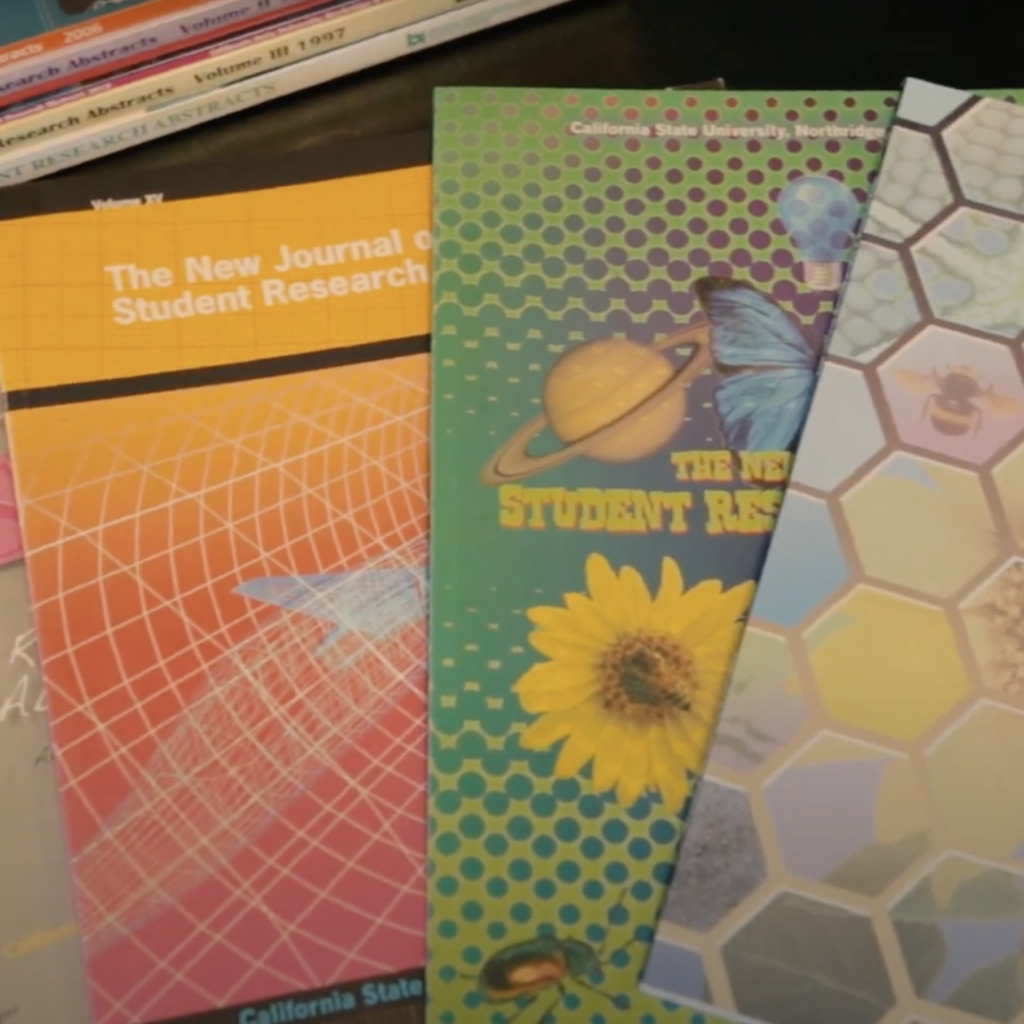The biology department at California State University, Northridge has stayed committed to promoting STEM research carried out by K-12 students and teachers in the Los Angeles Unified School District.
The results of these experiments and thousands of abstracts have been published in The New Journal of Student Research Abstracts every year since its first publication in 1995.
The newest volume of the journal – created by Dr. Steven Oppenheimer – marks 28 years of collaboration between CSUN and K-12 students and teachers. Oppenheimer, a U.S. presidential award winner and professor emeritus, came up with the journal to generate more scientific curiosity in K-12 students, as well as a solid and longer-lasting way to document students’ findings.
“Teachers and their students were creating scientific posters, so it made sense to get something more concrete for everyone,” Oppenheimer said.
Terri Miller, a retired teacher who has been helping with the journal for about 20 years, talked about the immense joy that not only the students got from having their experiments published, but their parents too.
“The kids, they see their names and get excited, but the parents get it, it’s really great for their children to be published authors,” Miller said.
The journal is open to the kinds of topics that can be explored and published. Dr. Oppenheimer said experiments are “totally up to the teacher and his [or] her students.”
It’s why there exists such a large variety of abstracts in the journal, he added. Some of the concepts explored include eyelash growth, curing phantom limb pain, the effect of acid rain on plants, caffeine’s effect on short-term memory, and if the hormone 20-hydroxyecdysone can be utilized to help people with osteoporosis, to name a few.
Miller said the kinds of topics vary depending on the age of the students, as well as what their interests are. With younger students, she said she offers something they are able to do, like testing the pH levels in their garden. Older students can choose what they’re interested in and are more active in developing the experiment.
For example, David Agekyan, Emily Mardirousi, Nathan Scherrer, Sean Canlas, and Yuzuna Kudo of Anderson W. Clark Magnet High School analyzed methane emissions in Aliso Canyon after learning about the canyon’s methane leak in 2015. Assisted by their teacher Dominique Evans-Bye, the students utilized drones and an electronic payload with Audrino gas sensors they programmed to monitor and highlight areas with large methane concentrations in Aliso Canyon and at their high school. They were able to determine that the hills in Aliso Canyon were funneling the invisible gas straight to residential areas.
“The kids suggested that if you put methane sensors along the hiking trail that is between the houses and the gas wells, that could be a detection site and prompt an evacuation instead of sitting there for months before anyone knew it was happening,” Evans-Bye said.
Oppenheimer says that STEM experiences in K-12 education are important because it helps solidify America as a world leader.
“Science keeps the U.S. strong by not only producing the best weapons, but by keeping the thinking at the top,” Oppenheimer said.
He added that many of the students who have become interested in science in their K-12 education have gone on to study science at Harvard and other prestigious universities.
Miller said that science experiences in younger education is important now, especially in a post pandemic world. Subjects like English and math were prioritized over science during the pandemic, she said, and wants to show young students that science contains problem-solving skills that anyone can use.
“Everyone needs science, even lawyers need it to talk about DNA,” Miller said.
Oppenheimer said that even though he is currently retired, he will continue to publish the journal.
Like this:
Like Loading...
Related





 Tweet This
Tweet This Facebook
Facebook Digg This
Digg This Bookmark
Bookmark Stumble
Stumble RSS
RSS
































REAL NAMES ONLY: All posters must use their real individual or business name. This applies equally to Twitter account holders who use a nickname.
0 Comments
You can be the first one to leave a comment.